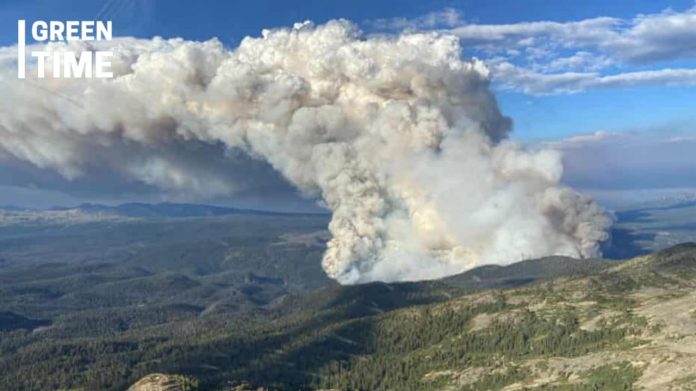In a stark revelation, a recent study published in the journal Nature has found that the wildfires that ravaged Canada’s forests last year released an unprecedented amount of greenhouse gases, surpassing the annual emissions of some of the world’s largest polluting nations. According to the study, these wildfires emitted a staggering 647 megatonnes of carbon, placing Canada’s forest fires as the fourth-largest emitter of carbon globally in 2022—only behind China, India, and the United States.
The carbon emissions from Canada’s wildfires last year were greater than those of seven of the top ten national emitters, including industrial giants like Germany, Japan, and Russia. Traditionally, Canadian forest fires have released between 29 to 121 megatonnes of carbon annually. However, the accelerating climate crisis—fueled by the continued burning of fossil fuels—has led to increasingly dry and hot conditions, which in turn have sparked more intense and widespread wildfires. In 2023 alone, these fires scorched an estimated 15 million hectares (37 million acres) of Canadian woodlands, accounting for about 4% of the country’s forest area.
The study’s findings have raised serious concerns about the reliability of global carbon budgets, particularly as they relate to the role of forests as carbon sinks. Forests have long been considered vital in absorbing industrial carbon emissions, but the study suggests that they may be contributing to the problem when they burn, rather than helping to mitigate it. This revelation calls into question the effectiveness of national emissions strategies that do not account for carbon released by natural disturbances like wildfires.
Brendan Byrne, the study’s lead author and an atmospheric scientist at NASA’s Jet Propulsion Laboratory, emphasized the need for a reassessment of carbon emission limits. As Canada faces more frequent and severe wildfires—projected to become commonplace by the 2050s—there is an urgent need to adapt our carbon accounting methods to reflect the reality of these catastrophic events. Without such adaptations, the global effort to limit warming to 1.5°C above pre-industrial levels may be based on dangerously inaccurate calculations.

